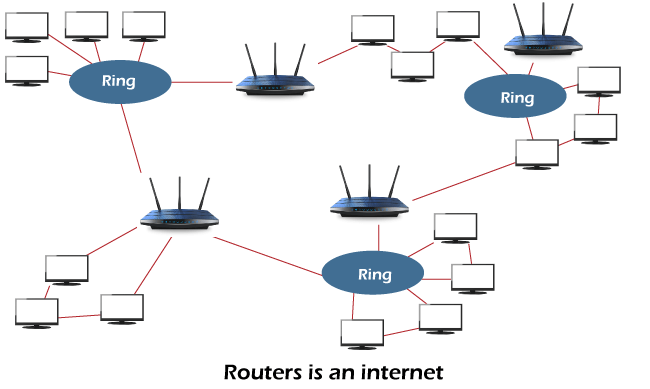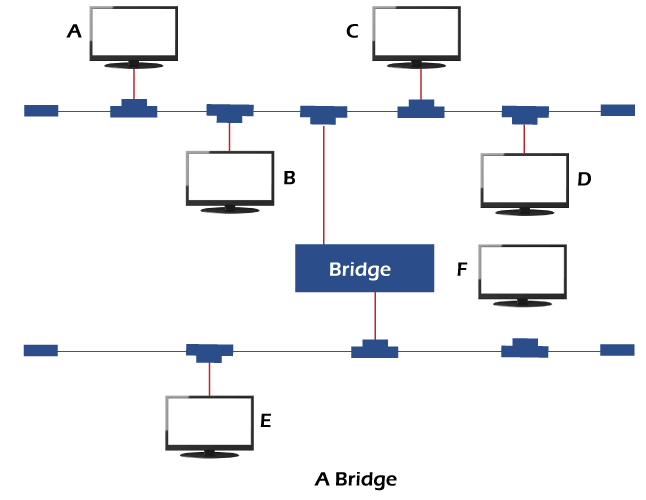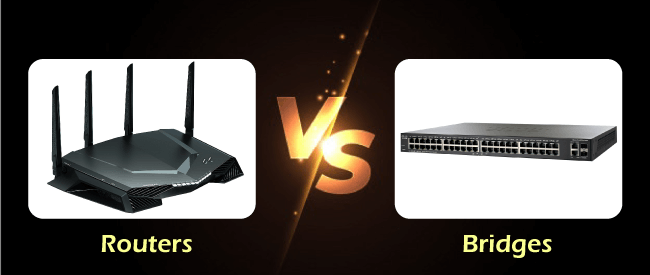Tutorial
Physical Layer
Data Link layer
Network Layer
Routing Algorithm
Transport Layer
Application Layer
Network Security
Misc
- Router
- OSI vs TCP/IP
- TCP vs UDP
- Transmission Control Protocol
- TCP port
- IPv4 vs IPv6
- ARP Packet Format
- ARP Table
- Working of ARP
- FTP Client
- FTP Commands
- FTP Server
- I2C Protocol
- Sliding Window Protocol
- SPI Protocol
- IP
- ARP Commands
- ARP
- Address Resolution Protocol
- ARP and its types
- TCP Retransmission
- CAN protocol
- HTTP Status Codes
- HTTP vs HTTPS
- RIP Protocol
- UDP Protocol
- ICMP Protocol
- MQTT protocol
- OSPF Protocol
- Stop and Wait Protocol
- IMAP Protocol
- POP Protocol
- CIFS
- DAS
- DIMM
- iSCSI
- NAS (Network Attached Storage)
- NFS
- NVMe
- SAN
- Border Gateway Protocol
- Go-Back-N ARQ
- RJ Cable
- Difference between Connection-Oriented and Connectionless Service
- CDMA vs. GSM
- What is MAC Address
- Modem vs. Router
- Switch Vs. Router
- USB 2.0 vs 3.0
- Difference between CSMA CA and CSMA CD
- Multiple access protocol- ALOHA, CSMA, CSMA/CA and CSMA/CD
- URI vs URL
- IMAP vs. POP3
- SSH Meaning| SSH Protocol
- UTP vs STP
- Status Code 400
- MIME Protocol
- IP address
- proxy server
- How to set up and use a proxy server
- network security
- WWW is based on which model
- Proxy Server List
- Fundamentals of Computer Networking
- IP Address Format and Table
- Bus topology and Ring topology
- Bus topology and Star topology
- Circuit Switching and Packet switching?
- Difference between star and ring topology
- Difference between Router and Bridge
- TCP Connection Termination
- Image Steganography
- Network Neutrality
- Onion Routing
- Adaptive security appliance (ASA) features
- Relabel-to-front Algorithm
- Types of Server Virtualization in Computer Network
- Access Lists (ACL)
- What is a proxy server and how does it work
- Digital Subscriber Line (DSL)
- Operating system based Virtualization
- Context based Access Control (CBAC)
- Cristian's Algorithm
- Service Set Identifier (SSID)
- Voice over Internet Protocol (VoIP)
- Challenge Response Authentication Mechanism (CRAM)
- Extended Access List
- Li-fi vs. Wi-fi
- Reflexive Access List
- Synchronous Optical Network (SONET)
- Wifi protected access (WPA)
- Wifi Protected Setup (WPS)
- Standard Access List
- Time Access List
- What is 3D Internet
- 4G Mobile Communication Technology
- Types of Wireless Transmission Media
- Best Computer Networking Courses
- Data Representation
- Network Criteria
- Classful vs Classless addressing
- Difference between BOOTP and RARP in Computer Networking
- What is AGP (Accelerated Graphics Port)
- Advantages and Disadvantages of Satellite Communication
- External IP Address
- Asynchronous Transfer Mode (ATM)
- Types of Authentication Protocols
- What is a CISCO Packet Tracer
- BOOTP work
- Subnetting in Computer Networks
- Mesh Topology Advantages and Disadvantages
- Ring Topology Advantages and Disadvantages
- Star Topology Advantages and Disadvantages
- Tree Topology Advantages and Disadvantages
- Zigbee Technology-The smart home protocol
- Network Layer in OSI Model
- Physical Layer in OSI Model
- Data Link Layer in OSI Model
- Internet explorer shortcut keys
- Network Layer Security | SSL Protocols
- Presentation Layer in OSI Model
- Session Layer in OSI Model
- SUBNET MASK
- Transport Layer Security | Secure Socket Layer (SSL) and SSL Architecture
- Functions, Advantages and Disadvantages of Network Layer
- Protocols in Noiseless and Noisy Channel
- Advantages and Disadvantages of Mesh Topology
- Cloud Networking - Managing and Optimizing Cloud-Based Networks
- Collision Domain and Broadcast Domain
- Count to Infinity Problem in Distance Vector Routing
- Difference Between Go-Back-N and Selective Repeat Protocol
- Difference between Stop and Wait, GoBackN, and Selective Repeat
- Network Function Virtualization (NFV): transforming Network Architecture with Virtualized Functions
- Network-Layer Security | IPSec Modes
- Next - Prev Network-Layer Security | IPSec Protocols and Services
- Ping vs Traceroute
- Software Defined Networking (SDN): Benefits and Challenges of Network Virtualization
- Software Defined Networking (SDN) vs. Network Function Virtualization (NFV)
- Virtual Circuits vs Datagram Networks
- BlueSmack Attack in Wireless Networks
- Bluesnarfing Attack in Wireless Networks
- Direct Sequence Spread Spectrum
- Warchalking in Wireless Networks
- WEP (Wired Equivalent Privacy)
- Wireless security encryption
- Wireless Security in an Enterprise
- Quantum Networking
- Network Automation
- Difference between MSS and MTU
- What is MTU
- Mesh Networks: A decentralized and Self-Organizing Approach to Networking
- What is Autonomous System
- What is MSS
- Cyber security & Software security
- Information security & Network security.
- Security Engineer & Security Architect
- Protection Methods for Network Security
- Trusted Systems in Network Security
- What are Authentication Tokens in Network security
- Cookies in Network Security
- Intruders in Network Security
- Network Security Toolkit (NST) in virtual box
- Pivoting-Moving Inside a Network
- Security Environment in Computer Networks
- Voice Biometric technique in Network Security
- Advantages and Disadvantages of Conventional Testing
- Difference between Kerberos and LDAP
- Cyber security and Information Security
- GraphQL Attacks and Security
- Application Layer in OSI Model
- Applications of Remote Sensing
- Seven Layers of IT Security
- What is Ad Hoc TCP
- What is Server Name Indication(SNI)
Difference between Router and Bridge
In this article, we will learn the differences between Router and Bridge networking devices in detail.
Router:
It is an interconnecting device that works at the physical, data link and network layer of OSI reference model. It may connect LAN and WAN in the network and can pass or relay the packets among them. It has access to the network or logical address. The following figure displays the router acts as a station in the network.

In this the routers are a member of more than one network simultaneously. They have links with two or more networks and contain the addresses of the stations on all these networks. It receives the packets from one connected network and passes them to a second connected network. If a received packet contains the address of a node that is on some other network, the Router determines which of its connected networks the best next relay point for that packet.
Bridge
A bridge is a networking device that works in both the physical and data link layer in a network. This devices can divide a large network into smaller segments and pass the frames between two originally separated LANs. A bridge maintains a MAC address of various stations attached to it. When a frames enters a bridge, it checks the address contained in the frame and compares it with a table of all the stations on both segments.
For Example, A-frame is sent from station A to station C. When this frame arrives at the Bridge, the Bridge checks its table and blocks it from crossing into the lower segment as station C is in the upper segment only. Thus, a frame is relayed to the entire upper segment and is not allowed to move to lower segment. If the frame is to be transmitted from station A to station F, the Bridge will allow this frame to pass through it and relay it to the entire lower segment.

Following are the point-to-point comparison between Router and Bridge.

| Sr. No | Points of differences | Router | Bridge |
|---|---|---|---|
| 1 | Function | The main function is to route the packets and to reduce the network problems. | The main function of Bridge is to filter the packets and to keep the traffic for each segment separately. |
| 2 | Layers | It is a hardware device that works at the network, data link & physical layer of the OSI Model. | It is a hardware device that works at the OSI model's data link and physical layer. |
| 3 | Address | The Router has access to the logical address or IP address of stations. | The Bridge has access to a physical address or MAC address of stations. |
| 4 | Protocols | RIP, OSPF, etc. these are some protocols that can be configured in the Router. | In Bridge, there are no protocols to configure. |
| 5 | Connection | It connects two or more networks and routes packets between them. | The Bridge is used to extend the existing network or divide or large network into smaller segments. |
| 6 | Routing Table | The Router uses a routing table to store information. This table is dynamic and is updated using routing protocols. | The Bridge does not use a routing table for storing information. |
| 7 | Data Structure | A router used graph data structure. | Bridge used tables data structures |
| 8 | Network Segmentation | In Router enables network segmentation. | In Bridge network segmentation is disable. |
| 9 | Domain | It works on more than single broadcast domains. | Bridge works on a single broadcast domain. |
| 10 | Transparency | It is not transparent to the end stations. | It is transparent to the end stations and do not rely on the protocol. |
| 11 | Efficiency | Routing is more efficient. | The Bridge has less efficiency than the Router. |
| 12 | Ports | It has more than two ports. | It has only two ports. |
| 13 | Path | Router devices can accommodate multiple paths. | Bridge devices can accommodate a single path. |
| 14 | Setup | Difficult | Easy |
| 15 | Cost | Routers are relatively expensive devices. | Bridges are relatively inexpensive devices. |


